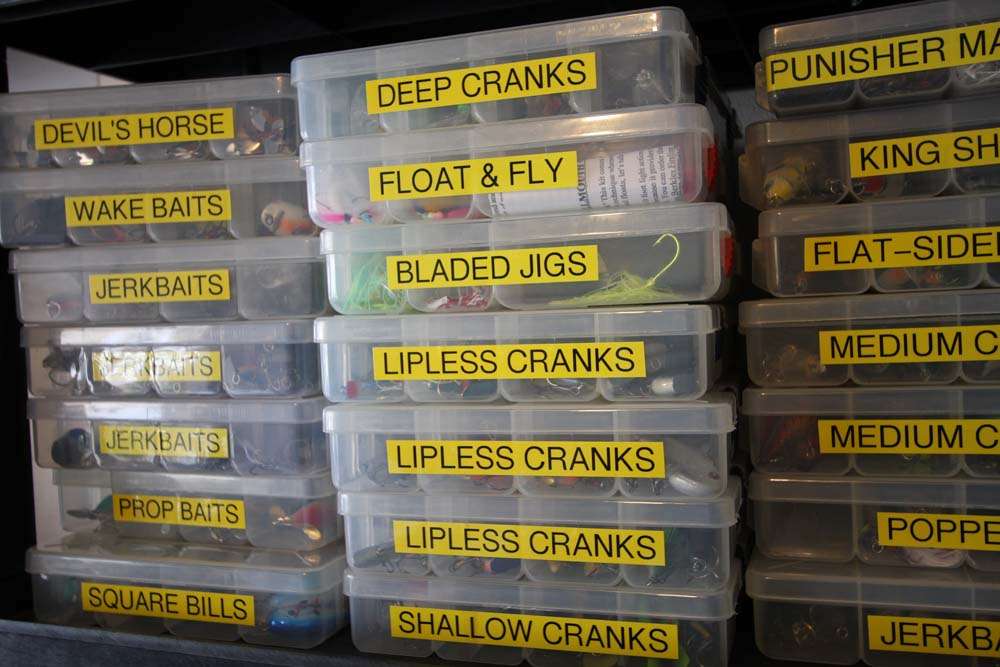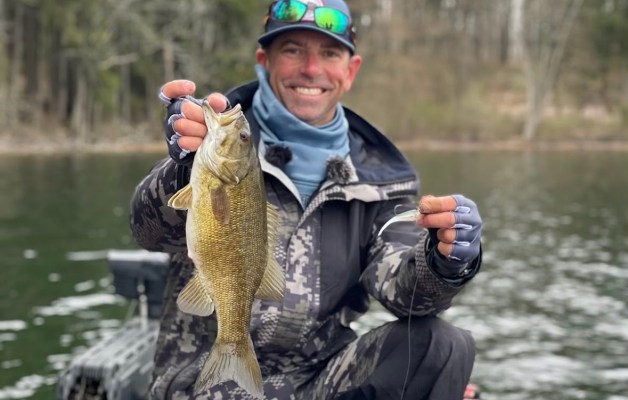
If you've been at the fishing game for very long, you've accumulated some "stuff." Just as George Carlin said, "Other people's stuff is 'junk,' but my junk is 'stuff.'" It's true with fishing items, too. Just before Christmas, my wife decided it was time for me to get organized and to straighten up the garage. As usual, she was right.
Things had gotten way out of hand. There was a kayak resting on top of a poker table. Half-empty boxes of lures were scattered here and there. Rod tubes were leaning in every corner. It looked like a tackle shop had exploded inside the garage.
Part of the reason I hadn't cleaned up before was that the project was so daunting. Where would I start? What should I throw away? How could I make sense of it all?
I wanted a clean and organized garage, and I wasn't afraid of the work, but I definitely needed some ideas on how to go about it. Luckily, my wife recorded a TV show that detailed the process, and I found some websites that made a lot of sense. What I learned might help you, too. Don't wait until the camera crew from "Hoarders" shows up.
Here are half a dozen pretty easy steps to a clean garage or fishing room.
1. Get it outta there!
Before you can really assess what you've got, you'll do yourself a big favor by taking it all out and starting over from scratch. You'll be amazed at how this helps on several levels. First of all, you'll find plenty of stuff that you can simply throw away (so you won't have to think about it anymore) and you'll have ideas about what you need to keep and where it can go to make the best use of your available space.
Pick a nice day so you can carry it all outside, lay it on the driveway or the grass, and then get out the broom and shop vac so you'll start clean.
2. Use your wall space
Shelves and pegboards are your friends. They get stuff off the floor and maximize your storage space. They can be modular and portable or they can be permanently attached to the wall. The choice is yours.
With pegboard, you can make your tackle room look like a store. Every bag of plastic worms can be neatly spindled. Every new crankbait easily visible until you stow it in your boat or tacklebox. The shelving units are great for anything that can't easily fit on a pegboard hook.
3. Suspend it
I actually got a ladder and my kayak up off the floor with some gizmos that attached to the runners of the garage door. Hooks and bike racks help, too. You might even build a shelf that suspends from the ceiling to hold rods, rod tubes, ladders or other items you don't need to access too often.
As you're creating these storage options, consider how often you need to get to these items. Don't put something you use every week in a spot that's difficult to reach, and don't put something you need only rarely in a place you walk past every day. How often you use it should dictate where it goes.
4. Think in the box
I'm really not sure how anyone was able to fish before the invention of Zip-loc® bags or large plastic storage boxes. They're essential for real organization in your tackle room. The Zip-loc bags are great for storing soft plastics anywhere, but it's the large plastic storage bins that will really help you tackle the garage.
Rather than use a hodgepodge of different sized bins, I'd recommend that you identify a couple of sizes that will fit with your shelving — one large and one small — and that you get a bunch of both sizes. Just like that first tacklebox you thought you'd never outgrow, you'll eventually outgrow these bins, too.
I used them for spare reels and fishing line — one big bin for monofilament, one for fluorocarbon and one for braid. Opaque boxes work best since they keep sunlight out and help to protect your line.
5. Create a workspace
Fishing "projects" are usually my downfall when it comes to keeping the garage neat and clean. I'd start one and soon have stuff scattered all over the place. This time around I'm doing something different. I went out and bought a workbench. My hope is that it will keep my projects in a designated area and keep them under control.
But the workbench is just part of the project solution. It needs to be comfortable, it needs to be well-lit and, since I live in Florida, it needs to be reasonably cool. A good chair, bright lamp and strong fan complete the package. You might need a heater or something else to make your work station "livable."
6. Label it!
A big part of my organization comes through labeling things. For that I went to an office supply store and bought a label maker that prints on adhesive tapes that I can easily affix to tackle boxes, bins, boxes or anything else.
You might think you don't need a label maker — and you might be right — but it helped me take my organization to the next level and get down to the really picky little stuff, like swivels and spinnerbait blades. It's easy to just dump those items in a small box and sort through them when you need them, but I learned that if I labeled something, I wanted it to be "right." The label maker somehow compelled me to do things the right way, so I can (hopefully) stay organized and find those green pumpkin Zoom Trick Worms when I need them.
The other thing the label maker does is make your labeling less permanent. If you take a Sharpie to that box or bin, it's permanent. If you label it with tape, you can pull it off and "reassign" it.
Getting organized wasn't that bad, and if I can do it, so can you.





